Of course, the question of choosing the type of heating for private houses will always be relevant. One of the well-proven ways is heating using a solid fuel boiler. In fact, the boiler is a heat generator made of cast iron or steel. Thermal energy for heating is obtained by combustion of fuel. Firewood, coal, peat or pellets can be used as it. The latter are fuel capsules. We will tell about all the subtleties and nuances, how to make a solid fuel boiler with their own hands.
Content
Types of solid fuel boilers
Depending on the fuel used, aggregates distinguish:
- Energy dependent.
- Non-volatile.
Fuel for energy-dependent boilers are pellets. In this case, such heat generators are equipped with an electric subdomain, thanks to which the air is heated.
Cast iron boilers are considered non-volatile, fuel for which is coal, firewood and peat.
Boilers can be installed both in horizontal and vertical position. Sometimes they are used as a slab, and not just for heating. In this case, the heat exchanger should be placed only vertically.
Boilers are allowed to mount on the wall horizontally, but it is recommended to do only if the room has small sizes. In this form, it is applicable only as a heating device.
On the principle of work distinguish:
- traditional
- long burning installations,
- heat generators.
The latter function on fuel granules.
Solid fuel boilers cast iron:
Schema of a solid fuel boiler:
In order to increase the CPD of the boiler, there are three ways:
- Use the energy of flue gases in order to additionally heating the room.
- Installation of a pump that allows you to switch with natural to forced circulation of the coolant.
- Using gases energy in order to heat water.
Specifications
Wood boilers
The aggregates fuel for which are firewood, most often put in the bath. These advantages include the following:
- Easy to maintain.
- This is one of the most affordable fuels for the boiler. After all, firewood can be found almost everywhere.
Of the shortcomings it is worth noting the following:
- The thermal conductivity of firewood is less than 5 thousand kcal / kg, which is relatively few.
- They burn quite quickly and at the same time allocate a large amount of component afterburning.
- This type of fuel has a small efficiency.
- High expenses for the delivery of imported fuel into remote regions.
This type of boiler is also suitable for installation in the country or for heating a seasonal agricultural room. Since in winter these buildings are usually not heated, the specific power and efficiency of the boiler is not significant.
Coal
Today, the most modern technologies and materials are used for the manufacture of such boilers. Their design is usually a combination of a shirt aggregate with water-tube. To the advantages of coal as fuel can be attributed:
- High thermal conductivity.
- Coal can deliver anywhere. Need only the road.
- High efficiency. When catching and igniting volatile substances that are allocated during the combustion process, this indicator can reach 85%.
- A relatively low price, which over time is still declining.
- High-quality coal boilers from one download usually provide heat dissipation to twenty days. For the season it may be enough of one ignition. It will only be allowed to exhaust periodically fuel.
- Such a boiler does not require constant supervision. The owner may even be absent long enough.
- Automation of coal aggregates does not require power supply.
Pellette
Advantages:
- Pellets are allowed to burn in the stove as firewood.
- Low cost. The price of 1 kcal of heating in this way will be lower than gas.
- High efficiency when using a special burner.
- Power is easily and flexibly, because the fuel can be supplied to the burner on one granule.
Disadvantages:
- When burning in the stove, many ashes are formed.
- Low thermal conductivity.
- This fuel can only be stored in a dry room, because Pellets have a property absneted from air moisture.
- Sale and delivery of this type of fuel are still in the infancy.
- DISTRIBUTION OF THE PELLET FILT Hose in the burner. Sometimes you have to change it twice in one season.
- Such a boiler cannot work without power, which usually leads to defrosting system.
Obviously, while pellet boilers have more flaws than advantages. But with the development of the industry, it is possible that such aggregates will be actively used in the future.
Solid fuel boiler with their own hands (Method 1)
The boiler can be purchased in the store or make yourself. The second method is considered more profitable. In order for the unit to be high-quality and productive, it is necessary to strictly follow the instructions. For the case you can take an old gas boiler or even a metal barrel. It needs to do holes through which pipes with heated water returning back to the heat generator will be held.
In this example, it will be considered how to assemble a vertical solid fuel unit with a metal case and a brick basis. Its sizes are designed for the heating of the construction of a total area of \u200b\u200b95-100 square meters. meters. The heat generator is a standard system consisting of seven cast iron radiators and a two-pipe wiring.
Tools and materials
The following tools will be required to work:
- Bulgarian small power.
- Tongs or Passatia.
- Gas cutter (welding).
- Metal square.
- Electric drill of small power and a set of necessary drills.
- Building level.
- Roulette.
- Mask to protect the face.
For the manufacture of metal housing, the following materials will be needed:
- Colonsets.
- River sand (peeled).
- Refractory or refractory brick.
- Doors for two compartments (cooker and ash).
- Heat resistant sheets are also required with 4-5 millimeters thick. Otherwise, the generator is needed in the future.
To make an internal part of the heat exchanger needed:
- 8 round profile pipes 780-800 millimeters and a diameter of 50 millimeters.
- 4 pieces of pipes of the same profile with a length of 300 millimeters and a diameter of 40 millimeters.
- 5 pieces of pipes having a rectangular profile, a length of 300 millimeters and a diameter of 50 millimeters.
- One pipe of the same diameter of 500 millimeters.
- 2 cuts of pipes with a diameter of 50 millimeters and a length of 100-150 millimeters.
- Small metal pieces of 60 per 40 millimeters. They are needed to close the joints.
Order of work
Solid fuel boiler with their own hands: drawings (example):
- For the manufacture of an aggregate, you first need to take 4 rectangular pipes with a length of 30-35 centimeters. They will become a vertical basis of the heat exchanger.
- In the pipes that will be located on the side of the furnace, you will need to cut four holes with a diameter of 50 millimeters with a gas burner. As a result, eight holes should turn out.
- Defects that were formed after the work done should be removed. This can be done with the help of a grinder.
- In vertical bases located in the back of the boiler, you need to make four holes with a diameter of 380-400 millimeters and four more than 500 millimeters from the connection side with the front vertical supports. Each pipe will eventually work on eight holes.
- After that, from a rectangular riser with a length of 500 millimeters, holes for pipes are cut. Through them will flow used water.
- Then, in the upper part of the rear vertical support, a hole for pipes is done, which will serve as a source of fluid supply to the heating system.
- In order to assemble the front of the heat exchanger, you need to do the following:
- put vertical bases at an angle of 90 degrees to the surface;
- put on them the remnants of the unused pipe of the rectangular profile. After that boil;
- connect the design from the bottom with the longest tube, which has holes for the output of water.
Now you need to fix the back of the heat generator.
Next, it is necessary to combine the front and rear parts of the unit by supplying longitudinal pipes to the holes. For this work, you will need an assistant who will keep pipes while you connect them.
Now you should connect pipes that are needed to transfer water in both directions, i.e. in the system and back. To do this, you need to fight the segments of a round profile. The joints of rectangular pipes should be closed by previously prepared metal slices of 60 per 40 millimeters.
To test the heat generator for strength, you can spend the following test:
- Close the plug out of the pipe to pump water.
- Pour water into the hole that leads to the heating system.
- If during this test there is no leakage, it means that the boiler can be installed in a metal case.
It remains to install the case. To do this, do the following:
- From the plate of heat-resistant steel with the help of a grinder to cut four side, two rear and two front walls of 840 by 300 millimeters.
- For the top plate and bottom cut two plates in size 450 per 450 millimeters.
- In the front wall, do two holes.
- Cut steel plates with a length of 800 millimeters, which will play the role of rigidity.
- Before making the installation of the external walls of the design, it is necessary to make a layer in the form of sand between them and the inner case, which must be pre-calcined on fire to eliminate the organications from it.
- Connect from the outside by welding rigid ribs.
- Install in door holes.
The boiler can be considered ready for use.
Production of a solid fuel boiler with their own hands (method 2)
Solid fuel boiler with his own hands: photo
Materials
The basis of the heat exchanger of such an aggregate will be a metal sheet with a thickness of 4-5 millimeters. Still in the design of the boiler there are the following items:
- Pipe loops with a diameter of 50 millimeters.
- Profile pipe with dimensions 60 by 40 millimeters.
- The exit pipe with a diameter of 50 millimeters.
- Pipe measuring 60 by 40 millimeters.
- Pipe with a diameter of 35-40 millimeters.
- Sheet metal racks 4-5 millimeters thick.
- Jumper from pipe 60 by 40 millimeters.
Depending on the requirements for the power of the heat exchanger, its dimensions may be different.
Order of work
Depending on the area of \u200b\u200bthe house, the size of both the heat exchanger and the entire design may vary. The dimensions of this boiler are suitable for the house of 90-100 square meters. meters.
The finished heat exchanger is installed on the brick basis. The dimensions of the unit are calculated so that the clearance of at least 1-2 centimeters remain between the brick and heat exchanger.
This heating system has:
- Six cast iron radiators of standard size.
- The two-pipe layout made with a slight bias, the outer diameter of which is 25-50 millimeters.
Mounting Rules:
- The laying of the walls of the boiler is erected on a concrete basis, which must correspond to the size of the unit.
- The unit should be placed so that all the points of the heat exchanger are located below the water outlet zones. To do this, it is better to use the construction level. The difference between these points should be at least 10 millimeters. Due to which you can prevent the formation of air traffic jam when filling the entire system with water. In addition, it improves water circulation.
- Brickwork should be done in all the rules, observing the technology of binding seams. The wall of such an aggregate should be 3-4 centimeters above the heat exchanger pipes. The upper part of the design is closed with a sheet of cast iron of standard sizes. It is important that it can easily be removed during operation.
- The chimney can be made brick or metal. It is mounted in the already existing smoke channel or placed separately.
Solid fuel boiler with their own hands (Method 3)
- In this unit, the heat exchanger is mounted mainly in the vertical plane. Such a boiler is most suitable for seasonal heating.
- The smoke tube can be installed directly on the unit or side. If one komka is installed, then only the second placement of the pipe is suitable.
- The basis for the heat exchanger in this case serves as a plate of 5-6 millimeters thick. The thicker metal, the longer the time it is necessary to heat the boiler.
- To increase the water circulation rate and increase the efficiency of heating, the input of the return can be made in front of the device. In this case, the pipe of the square or rectangular profile is welded to both side shelves. It should be done extremely accurately.
- To increase the heat transfer of the boiler, its side shelves are recommended made of pipes. In this case, at the top and bottom to the rear plate should be horizontally to quickly cut the segment of a size of 60 per 40 millimeters. Between them you need to vertically weld the pipe with a diameter of about 32-40 millimeters.
- The heat exchanger should be installed in terms of a solid concrete base. A brick configuration camera is laid out for it, and a special lattice is located above it.
- When the heat exchanger is erected, around it from refractory bricks you need to make a laying of the walls of the fuel.
- Next, install the door to clean the fuel from the formed waste and arson of fuel, as well as the recess to load firewood or coal.
- The height of the chimney should be at least 5-6 meters from the level of the installed lattice. It can be erected directly on the boiler or posted on the foundation next to the unit. Mount the pipe should be at one time with the masonry walls. It can be not only brick, but also metal or ceramic.
Solid fuel pyrolysis boilers with their own hands (schematic image):

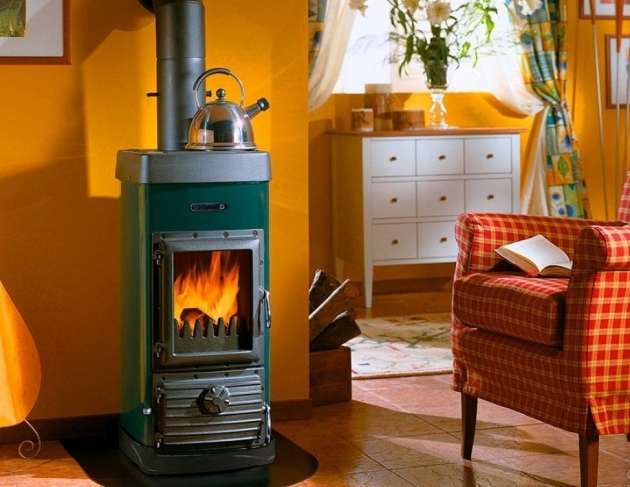
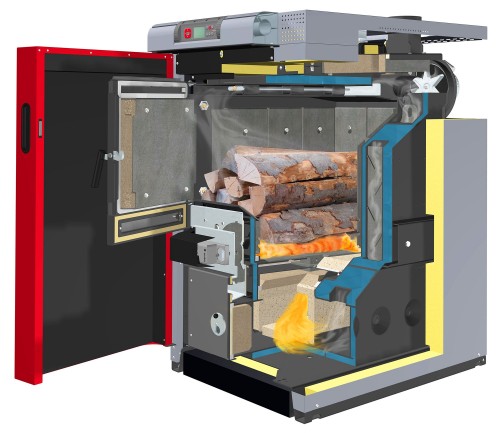
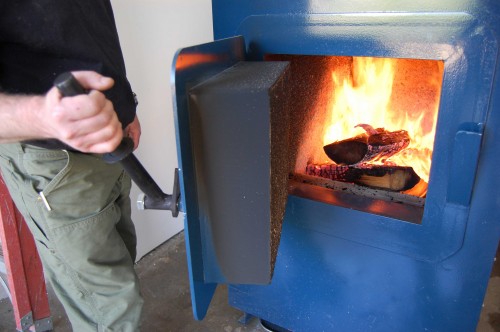
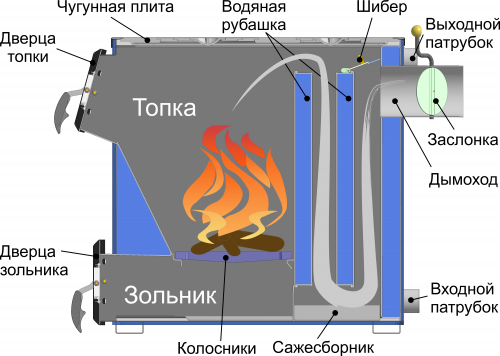
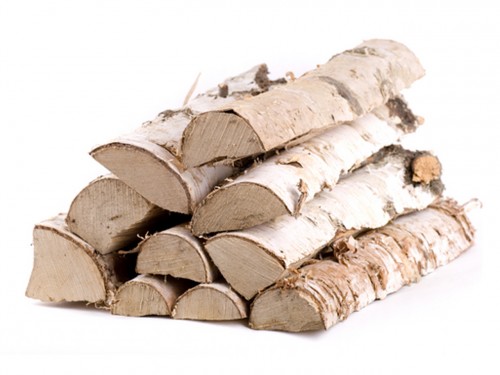
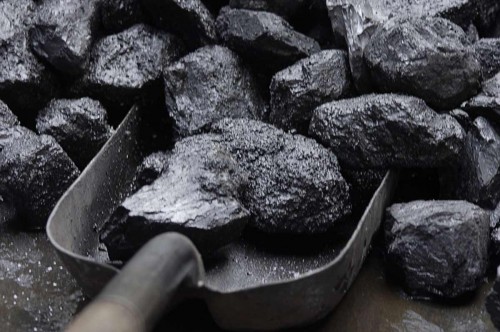
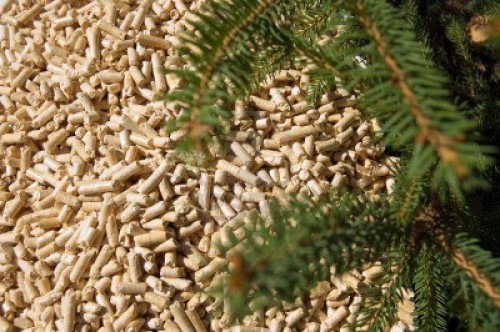
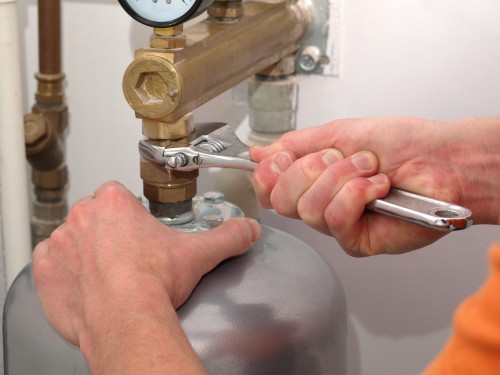
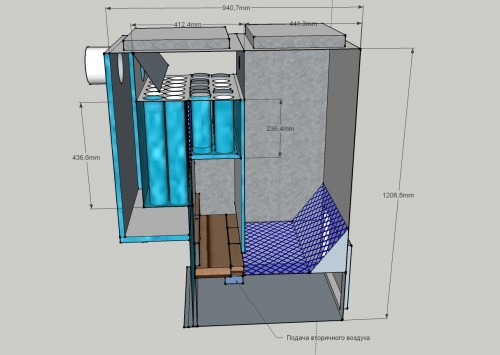
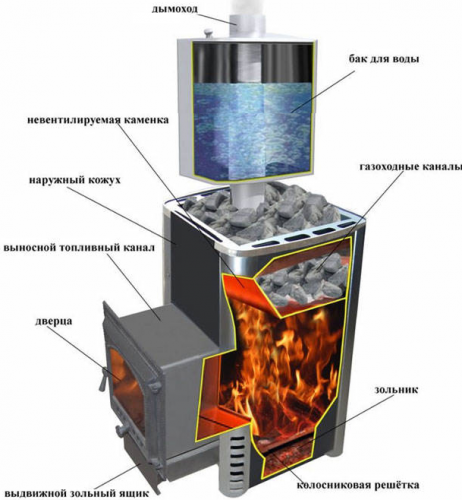
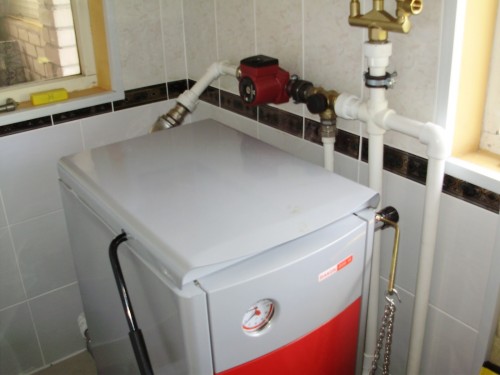
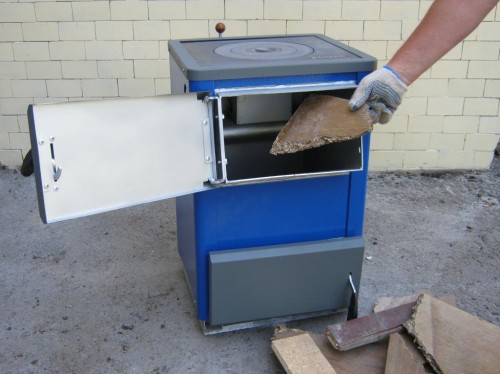

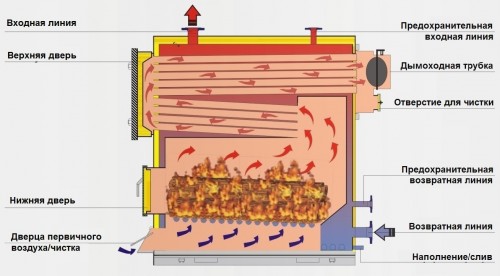






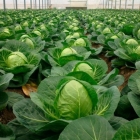



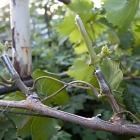

 Start a discussion ...
Start a discussion ...